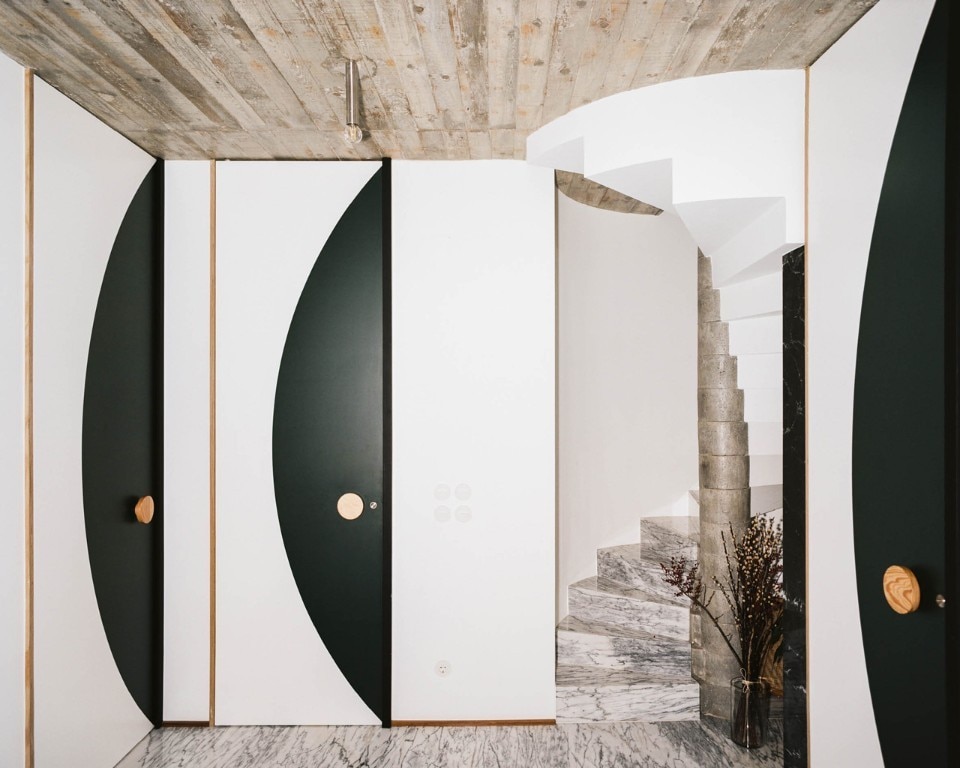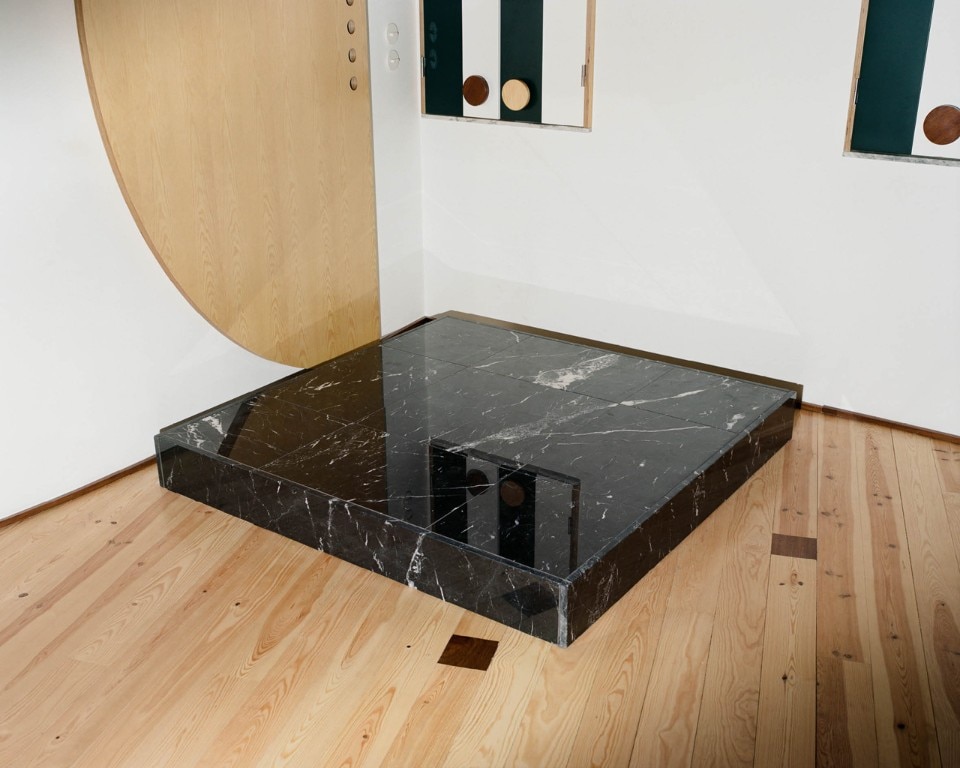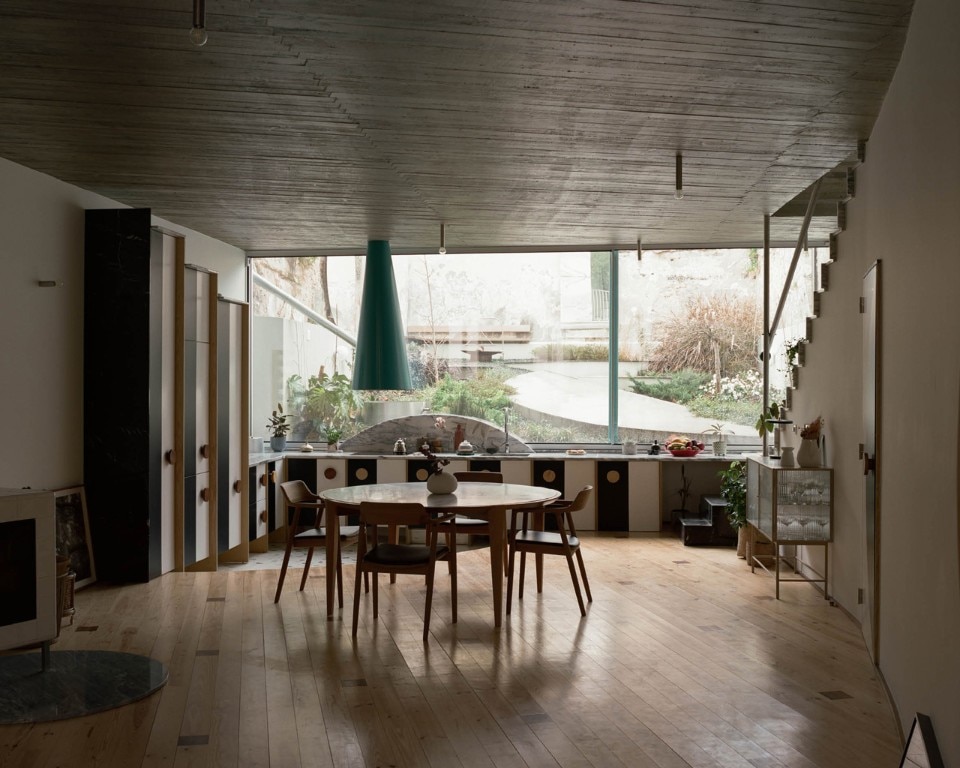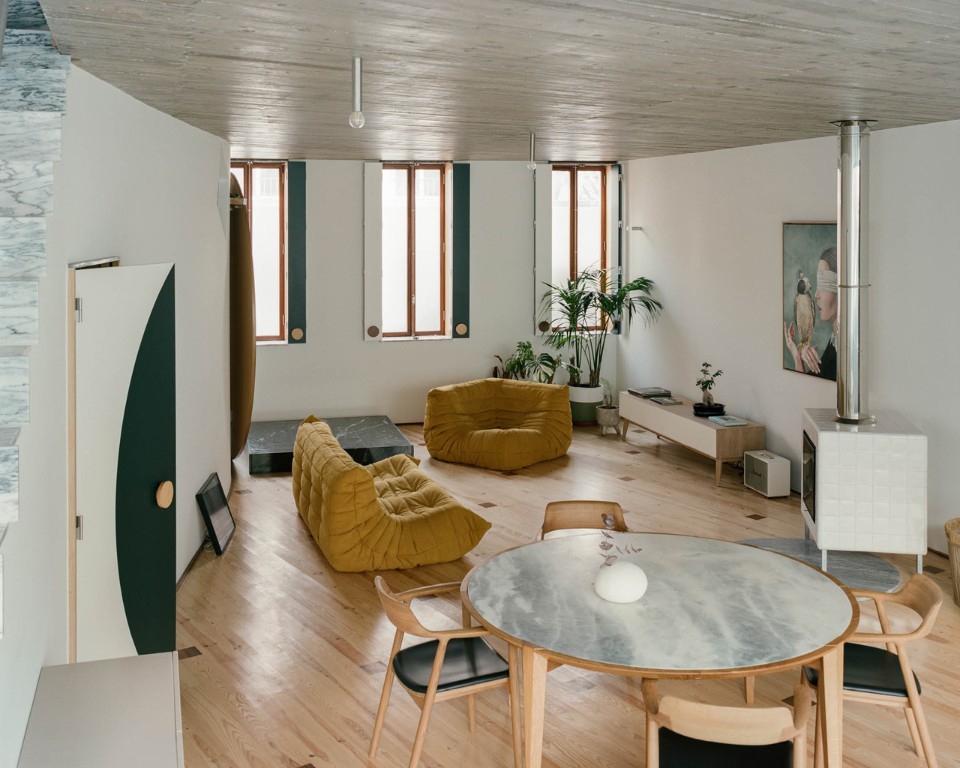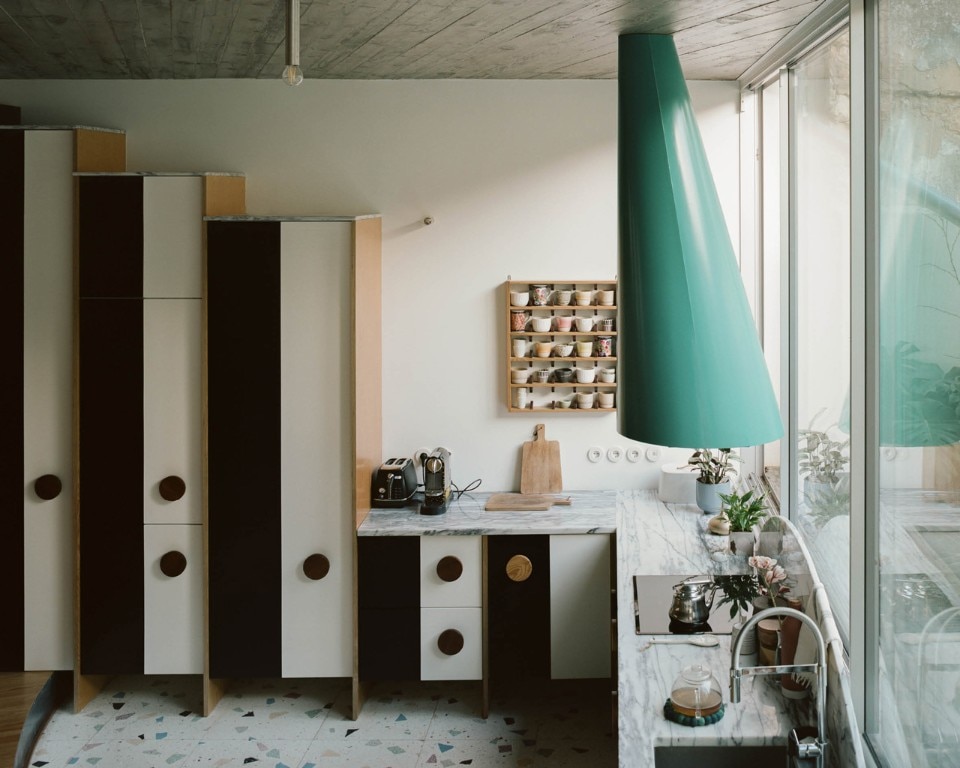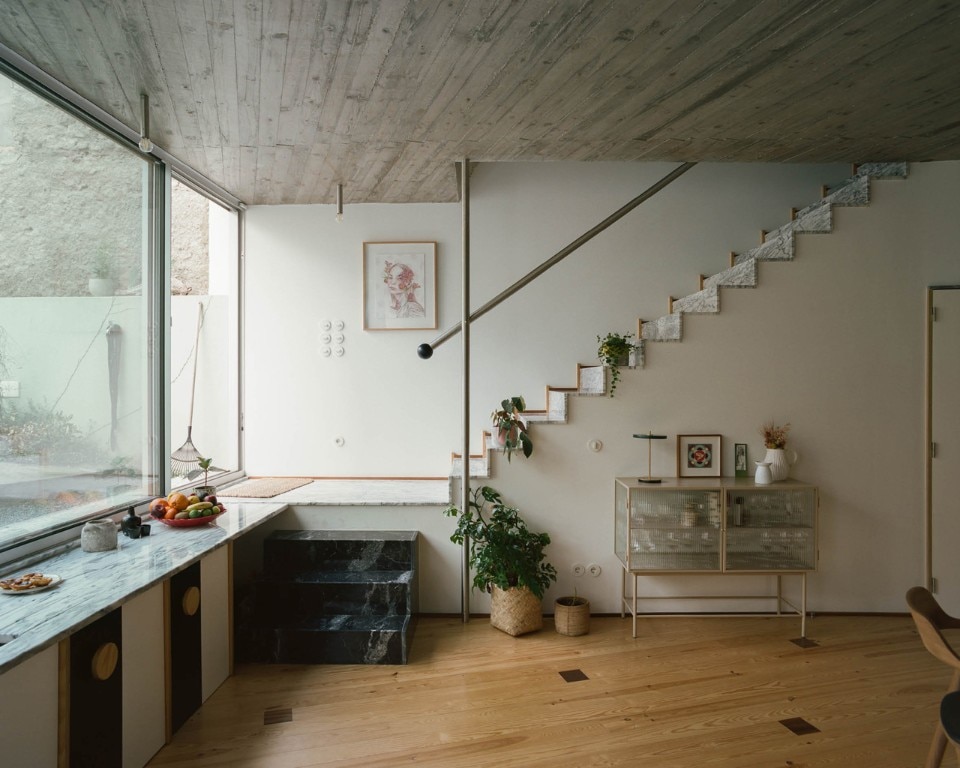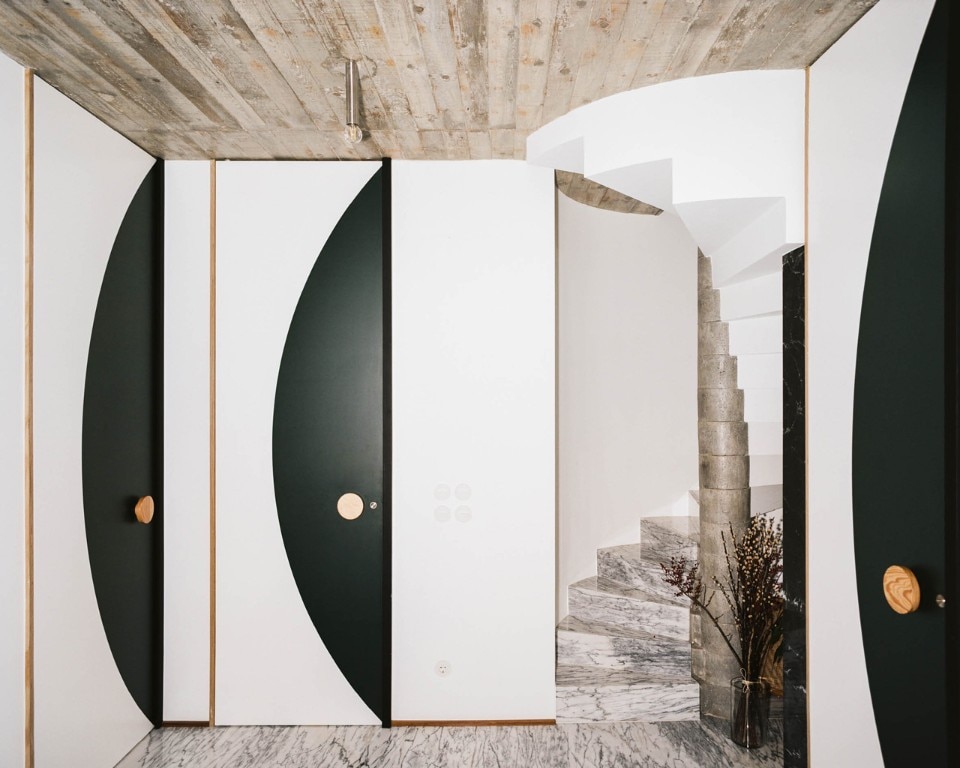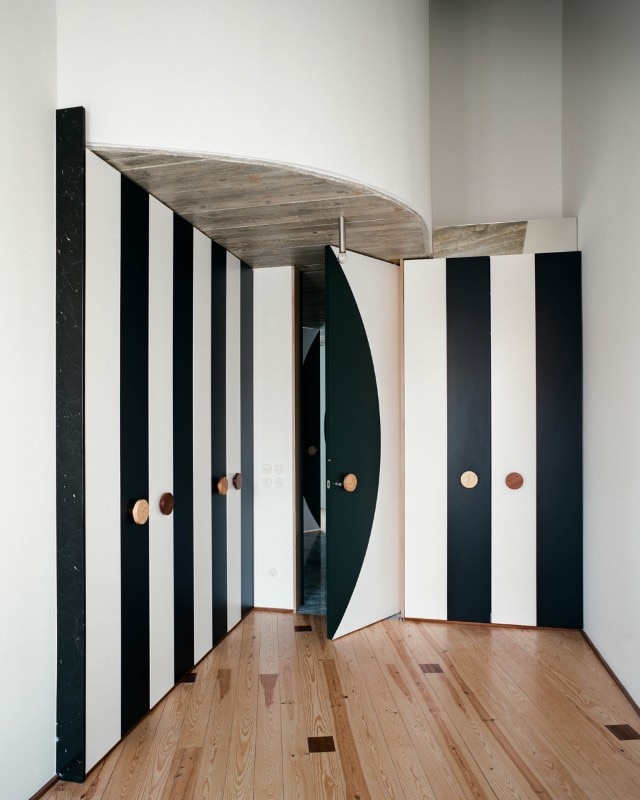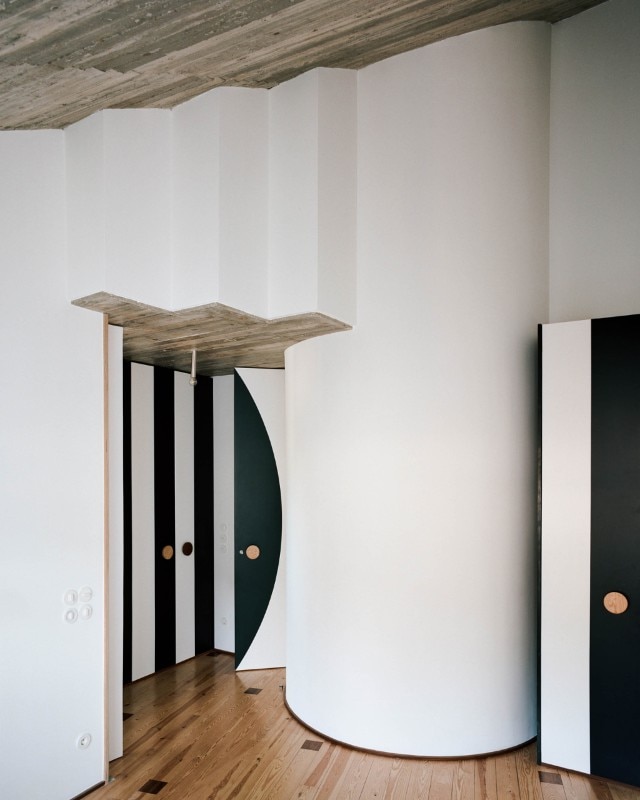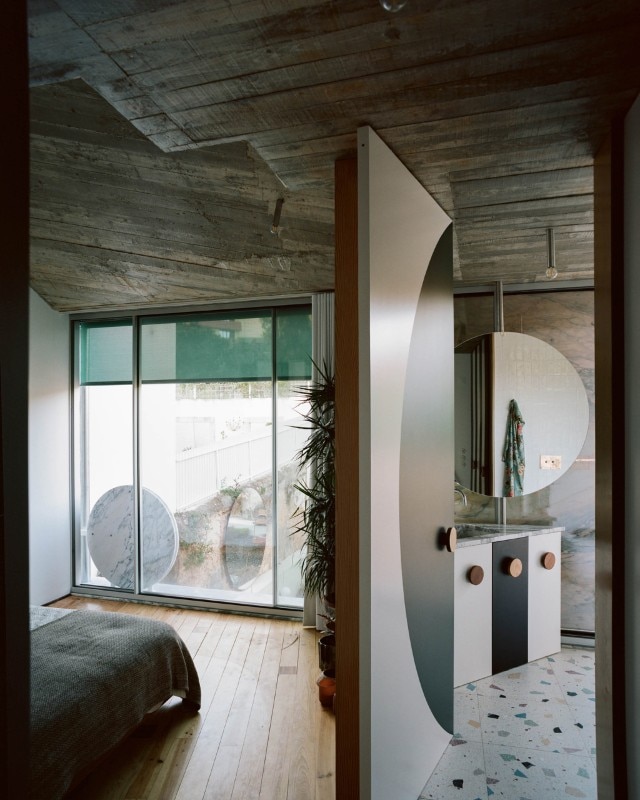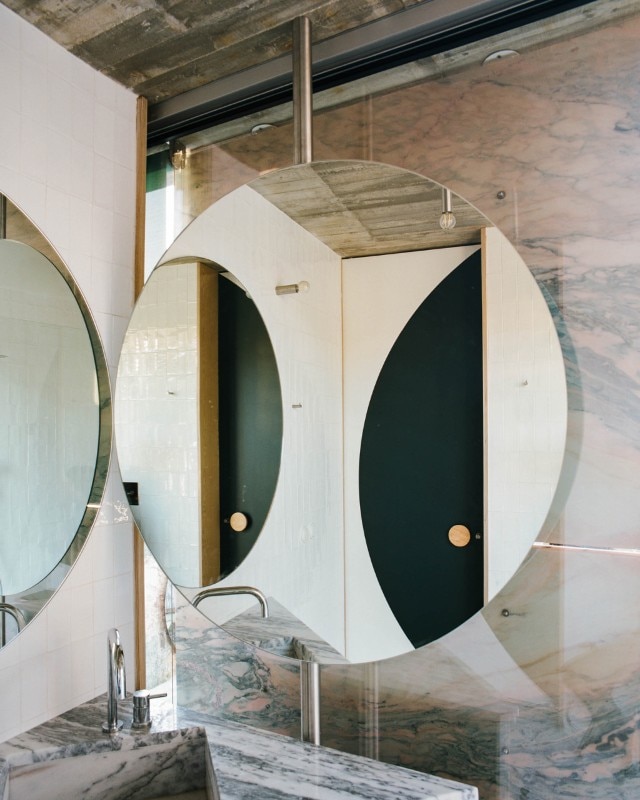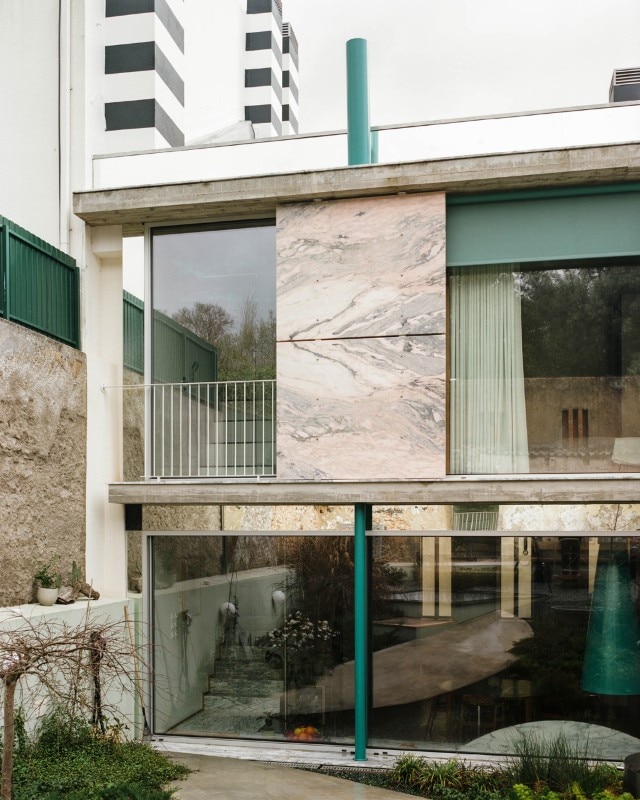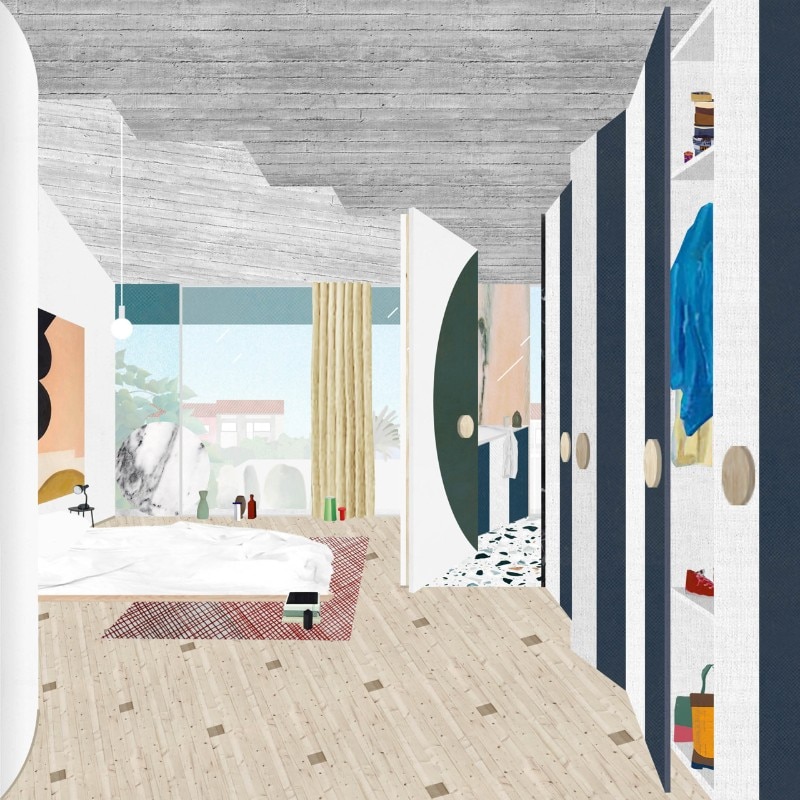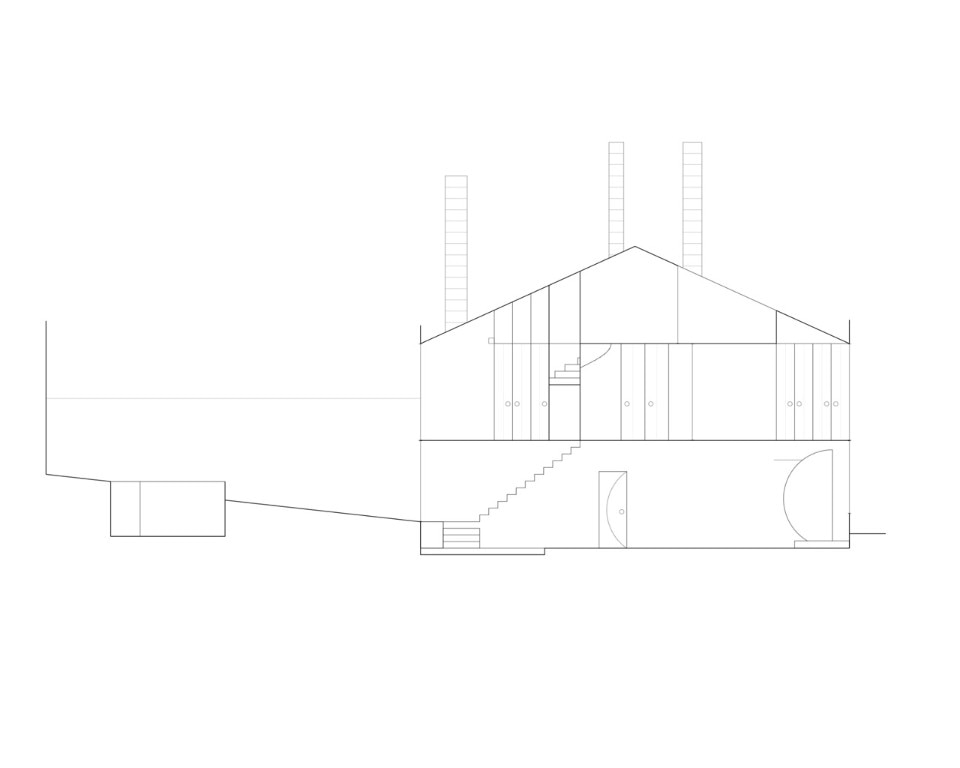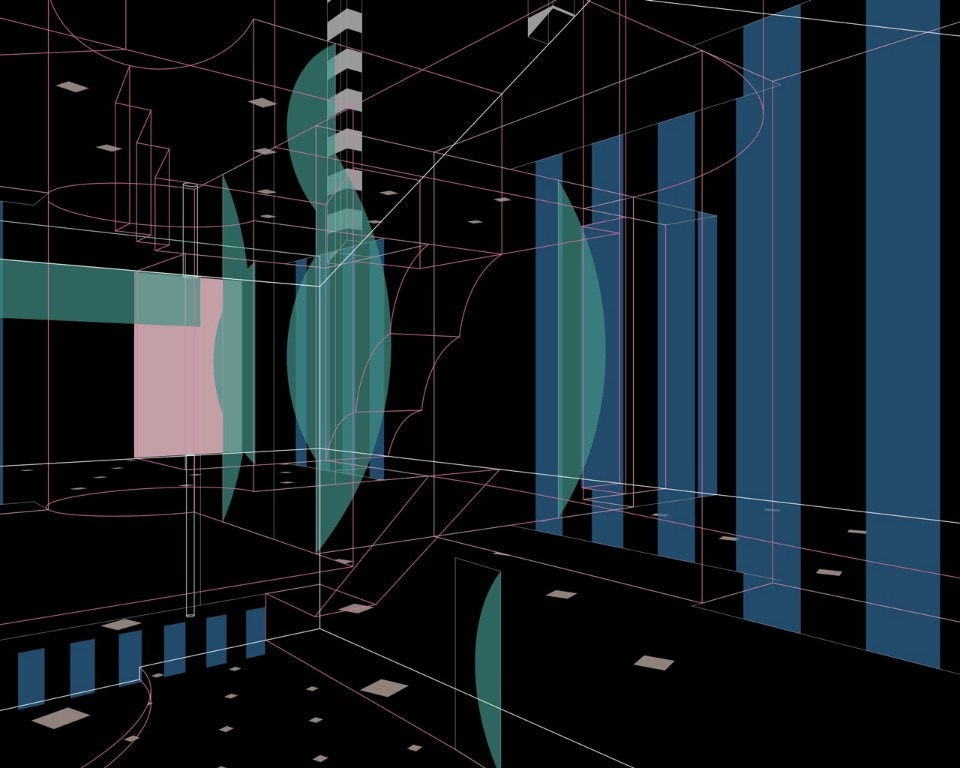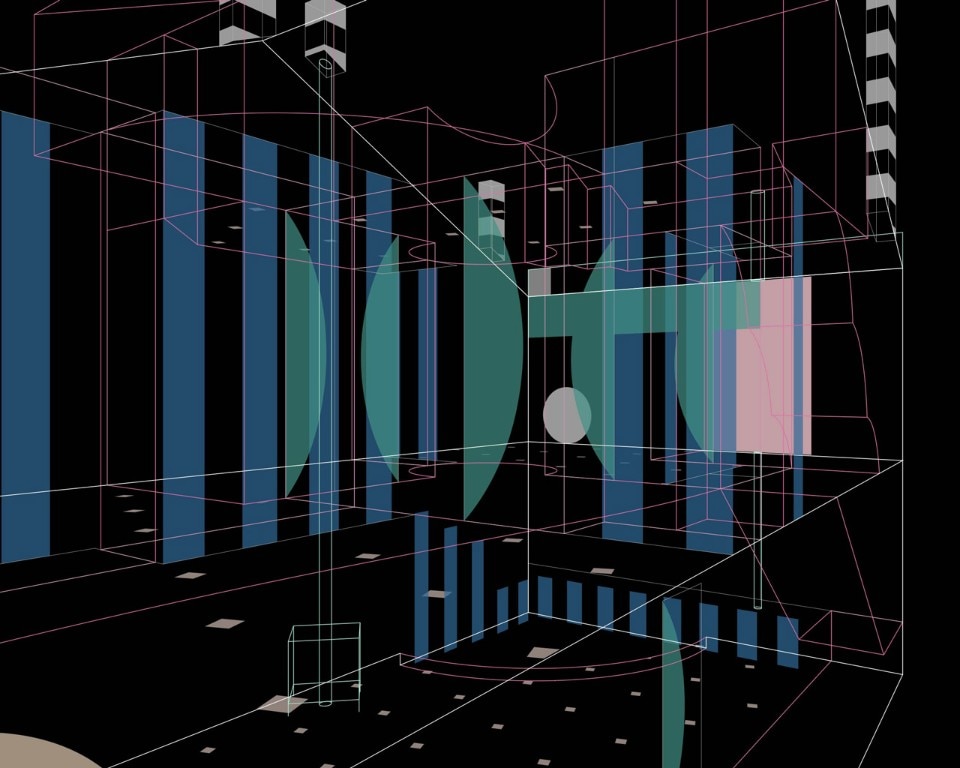The House without idea expands the research on urban living that is a distinctive feature of Fala Atelier. Respecting the constraints imposed by the physical and legal context, the architects create an unexpected and joyful everyday life through small eccentric gestures and poetic elements. These elements are capable of changing the sense of conventional by starting from scratch a diferent discourse on architecture. For Fala, rejecting banality means playing with recesses, protrusions, inclinations, cuts, and duplications that do not always follow rational logic. Modularity blurs into singularity; materials and forms clash or invert the norms they are usually perceived by. The result is a continuous ambiguity between what is surface and what is volume, what unites and what separates, what is ordered and what defies the rule.

The three floors tell different stories. Grouping the service spaces on one side, hidden by a partition, allows for a unitary living room at ground level, to strengthen the connection with the garden at the back. Thanks to slight excavation and slopes, the garden seems to flow into the living room. The upper level, on the other hand, features a central distribution space from which a spiral staircase leads to the attic. The unique shape of the spaces, characterized by double heights and irregular partitions, is complemented by decorative finishes with white and dark blue patterns. The doors are marked by cutouts of dark green circles, contributing to making the furnishings part of an abstract perceptual apparatus, purified from the mundanity it embraces.
The facades also tell two different stories: the urban front follows a recognizable geometric and compositional order, playing with finishes and subtle variations, such as the parapet made from a circular stone slab. The interior facade, on the other hand, embraces transparency and reflections through glass and mirrored surfaces. Amidst these, the round stone slab still peeks through, framed by unlikely marble cornices.


